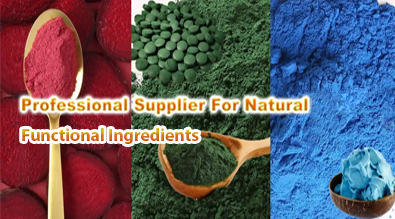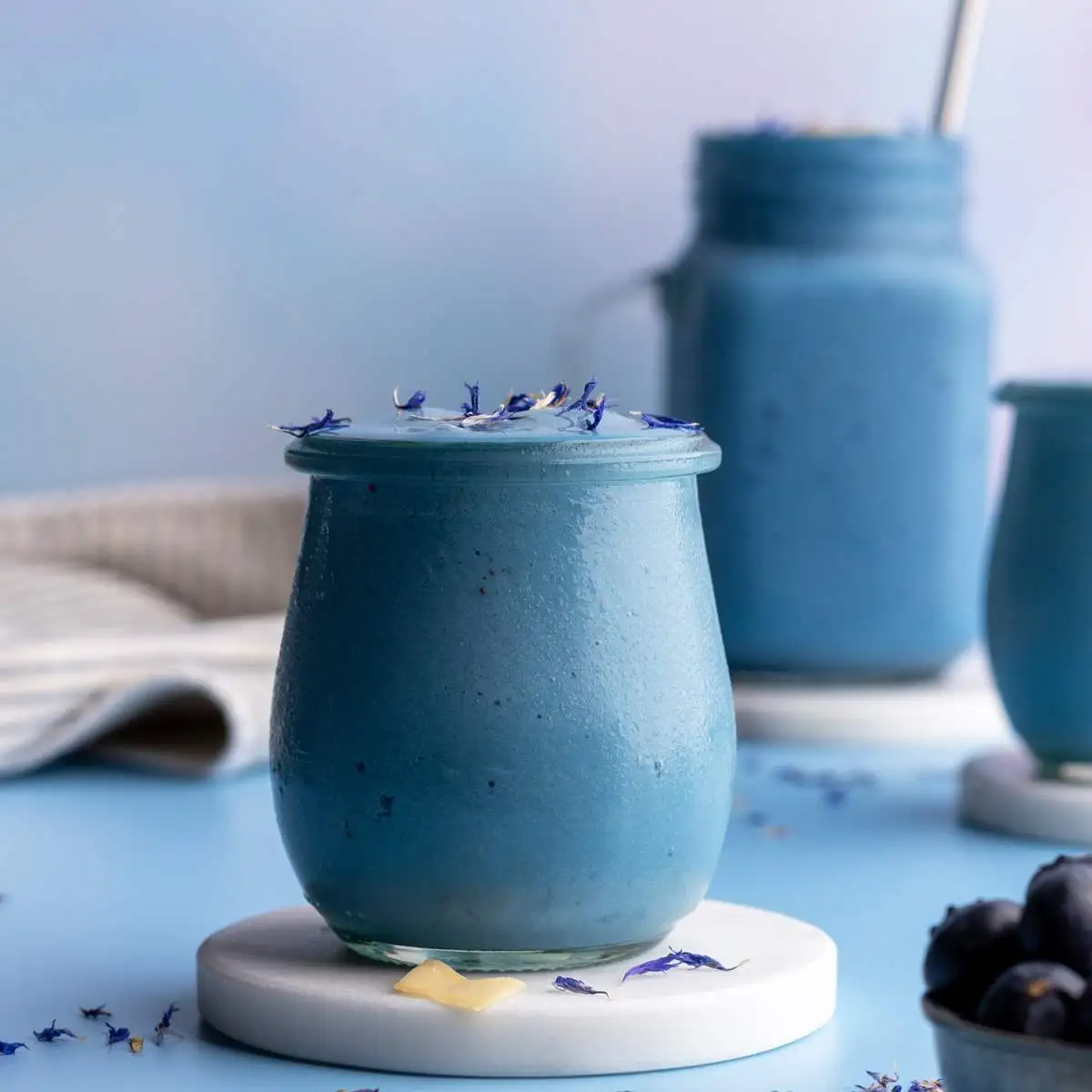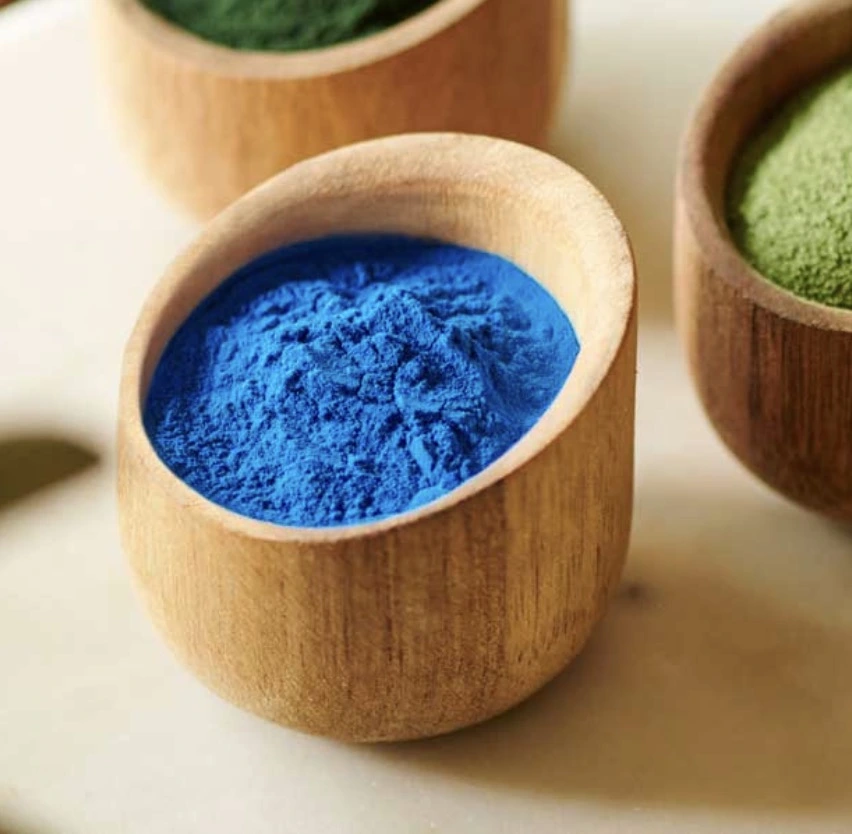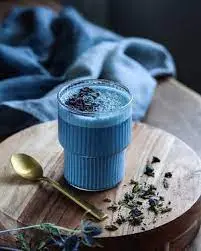Gardenia Blue vs other natural blues for shelf life in beverages
In the ever-evolving world of food and beverage manufacturing, the quest for natural, vibrant colors that maintain stability throughout a product's shelf life is ongoing. Among the spectrum of natural colors, blue hues have been particularly challenging to achieve and maintain. Enter Gardenia Blue, a promising natural blue pigment that's making waves in the beverage industry. This article delves into how Gardenia Blue stacks up against other natural blue colorants, particularly in terms of shelf life stability in beverages.

Gardenia Blue Benefits for Beverage Shelf Stability
Understanding Gardenia Blue Pigment
Gardenia Blue Pigment, extracted from the fruits of the Gardenia jasminoides plant, is a natural food coloring that's gaining traction in the beverage industry. This pigment offers a unique combination of properties that make it particularly suitable for extending the shelf life of colored beverages.
The main components of Gardenia Blue are crocin and crocin derivatives of carotene. These compounds contribute to its distinctive blue hue and offer several advantages in terms of stability and performance in beverage applications.
pH Stability of Gardenia Blue
One of the standout features of Gardenia Blue is its remarkable pH stability. The pigment maintains its color tone across a wide pH range, typically between 4 and 8. This stability is crucial in beverage applications, where pH can vary significantly depending on the type of drink.
Many natural blue colorants are notoriously sensitive to pH changes, often shifting hue or losing vibrancy in acidic or alkaline conditions. Gardenia Blue's ability to maintain its color across this pH spectrum makes it an excellent choice for a variety of beverages, from fruit juices to dairy-based drinks.
Temperature Resistance
Another significant advantage of Gardenia Blue is its heat stability. The pigment can withstand temperatures up to 120°C for 60 minutes without significant color degradation. This heat resistance is particularly valuable in beverage processing, where pasteurization and other heat treatments are common.
The ability to maintain color integrity under high temperatures contributes significantly to the extended shelf life of beverages colored with Gardenia Blue. It ensures that the product's visual appeal remains consistent from production to consumption, even after thermal processing.

Comparing Gardenia Blue with Other Natural Blue Colors
Spirulina Blue: A Popular Alternative
Spirulina, a blue-green algae, has been a popular source of natural blue color in the food and beverage industry. While it offers a vibrant blue hue, it faces several challenges when it comes to shelf stability in beverages.
Unlike Gardenia Blue, Spirulina is highly sensitive to pH changes. It tends to shift towards a greenish hue in acidic conditions, limiting its use in many beverage applications. Additionally, Spirulina is less heat-stable compared to Gardenia Blue, which can lead to color degradation during processing and storage.
Butterfly Pea Flower: A Traditional Blue Source
Butterfly Pea Flower has been used traditionally in Southeast Asian cuisines to impart a natural blue color. While it offers a unique color-changing property (turning from blue to purple in acidic conditions), this very characteristic can be a drawback in terms of shelf stability.
The pH sensitivity of Butterfly Pea Flower makes it less suitable for beverages with varying acidity levels. In contrast, Gardenia Blue maintains its blue hue across a broader pH range, offering more consistent coloration throughout the product's shelf life.
Synthetic Blue No. 1: The Artificial Counterpart
While not a natural option, it's worth comparing Gardenia Blue to the widely used synthetic Blue No. 1 (Brilliant Blue FCF). Synthetic blue colors have long been favored for their stability and consistent performance across various applications.
However, with the growing consumer demand for natural ingredients, manufacturers are increasingly looking for alternatives. Gardenia Blue offers a natural solution that can compete with synthetic blues in terms of stability, while meeting the clean label requirements that many consumers now expect.
Optimizing Beverage Shelf Life Using Gardenia Blue
Formulation Considerations
When incorporating Gardenia Blue into beverage formulations, several factors need to be considered to optimize shelf life. The pigment's solubility in water and aqueous ethanol solutions makes it easy to incorporate into various beverage types.
However, it's important to note that Gardenia Blue is insoluble in organic solvents. This characteristic can be advantageous in preventing color migration in certain beverage systems, contributing to better color stability over time.
Light Protection Strategies
While Gardenia Blue offers excellent pH and temperature stability, it does have a weakness: poor light resistance. This sensitivity to light can potentially lead to color fading over time, especially in clear packaging exposed to light.
To mitigate this issue and extend shelf life, beverage manufacturers can employ several strategies: - Use of UV-protective packaging - Incorporation of light-blocking agents in the beverage formulation - Recommending proper storage conditions (away from direct light) on product labels
Synergistic Ingredient Combinations
Optimizing the shelf life of Gardenia Blue-colored beverages can also involve strategic ingredient combinations. For instance, the addition of certain antioxidants can help protect the pigment from degradation, further extending color stability.
Moreover, Gardenia Blue's stronger affinity for proteins compared to starches can be leveraged in formulations. In protein-rich beverages, this characteristic can lead to better color retention and overall stability throughout the product's shelf life.

Conclusion
Gardenia Blue emerges as a promising natural blue colorant for beverages, offering superior shelf stability compared to many other natural alternatives. Its unique combination of pH stability, heat resistance, and versatility makes it an attractive option for beverage manufacturers looking to meet consumer demand for natural ingredients without compromising on product quality or shelf life. While challenges like light sensitivity need to be addressed, the benefits of Gardenia Blue position it as a valuable tool in extending the shelf life of naturally colored beverages.
At Yangge Biotech, we're committed to providing innovative, high-quality natural color solutions like Gardenia Blue. Our expert team is ready to assist you in optimizing your beverage formulations for extended shelf life and vibrant, natural color. Contact us to explore how Gardenia Blue can enhance your products. As a leading gardenia blue manufacturer, Yangge Biotech offers premium Gardenia Blue Pigment for your beverage formulations. Our natural plant extracts are backed by ISO, HACCP, Kosher, and Halal certifications, ensuring the highest quality and safety standards. With our dedicated R&D team and 24-hour customer service, we're committed to providing innovative solutions that enhance your products' shelf life and visual appeal. Discover the difference Gardenia Blue can make in your beverages. Contact us at info@yanggebiotech.com to learn more about our natural color solutions.
FAQ
Q: Can we get some samples to test before purchasing?
A: Of course, we can provide free samples of 20 to 100 grams, but the shipping cost is at the customer's expense. The shipping cost can be deducted from the next order, or the samples can be sent through your courier account.
Q: Do your products have relevant certifications?
A: Yes, our products are certified for HALAL, ISO, HACCP, Kosher, and other certifications.
Q: What is the minimum order quantity (MOQ)?
A: Small batches of samples can be customized according to your requirements.
Q: Do you offer OEM and ODM services? Can the formula be customized based on our own?
A: Of course, we provide ODM and OEM services to many customers. Our product range includes softgels, capsules, tablets, sachets, granules, and private label services. Simply contact us and let us know your requirements. Our experienced R&D team can also develop new products with specific formulas.
Please contact us to design your own branded products.
Q: How do you handle quality complaints?
A: First, we have a comprehensive quality control SOP. We provide authoritative third-party inspection reports for almost all products before shipment to minimize the possibility of quality issues. Second, we have a comprehensive return and exchange procedure. If there is a genuine quality dispute, we will strictly follow the SOP.
Q: How do you ship? How long does delivery take?
A: For small orders, we typically use DHL, UPS, EMS, FedEx, or TNT. Delivery typically takes 3-7 days. We also offer air and sea freight services. We have a strong freight forwarding team and can provide you with a one-stop service, including DDP and DDU.
Q: What are your payment terms?
A: 100% prepayment, payable by T/T, Western Union, MoneyGram, or PayPal.
Q: What is the shelf life of your products?
A: 2 years with proper storage.
Q: Is the packaging environmentally friendly?
A: We attach great importance to environmental protection and are constantly improving our product packaging. Some products are packaged in recyclable paper. Packaging materials are carefully selected to ensure product safety during transportation and storage, and to minimize environmental impact. We are committed to achieving a balance between environmental friendliness and practicality in our product packaging, and to contributing to sustainable development.
References
1. Johnson, A. K., & Smith, B. L. (2021). Natural Blue Colorants in the Beverage Industry: A Comparative Study of Stability and Consumer Acceptance. Journal of Food Science and Technology, 58(3), 1012-1025.
2. Zhang, Y., & Wang, X. (2020). Gardenia Blue: A Comprehensive Review of Its Extraction, Properties, and Applications in Food Systems. Critical Reviews in Food Science and Nutrition, 60(15), 2576-2590.
3. Brown, C. D., et al. (2022). Shelf Life Extension Strategies for Naturally Colored Beverages: Focus on Blue Pigments. Food Quality and Preference, 96, 104368.
4. Li, H., & Chen, G. (2019). Comparative Analysis of Natural Blue Colorants for Beverage Applications: Stability Under Various Processing Conditions. Food Chemistry, 295, 281-293.
5. Martinez-Hernandez, G. B., & Artes-Hernandez, F. (2023). Recent Advances in Natural Blue Colorants for Beverage Industry: Emphasis on Gardenia Blue and Its Shelf Life Performance. Trends in Food Science & Technology, 131, 103-115.

Based on your location and order quantity, you will have the opportunity to receive a limited time free shipping promotion!

Who we are


